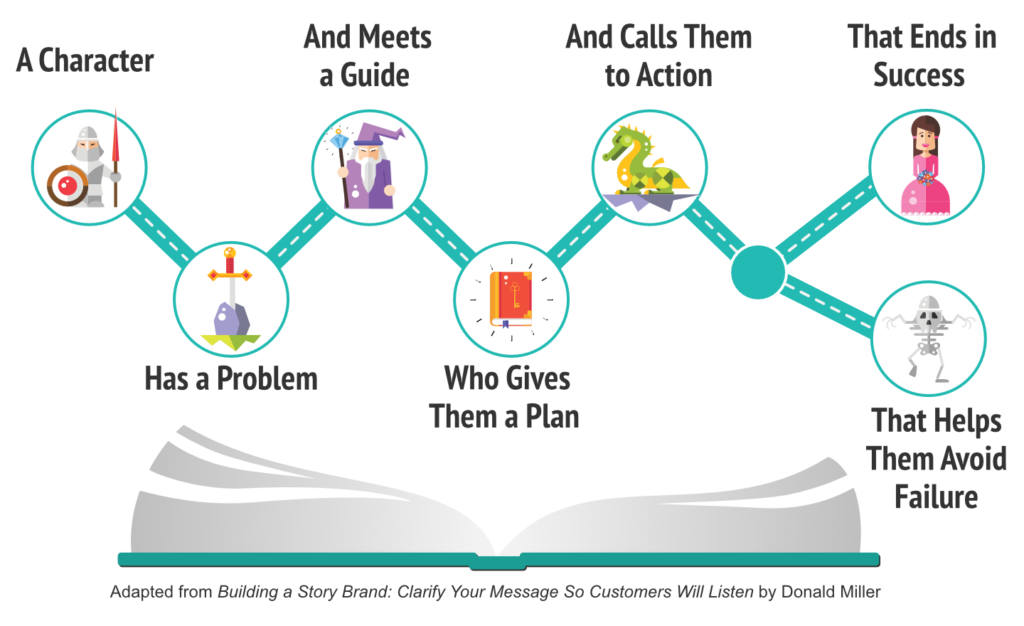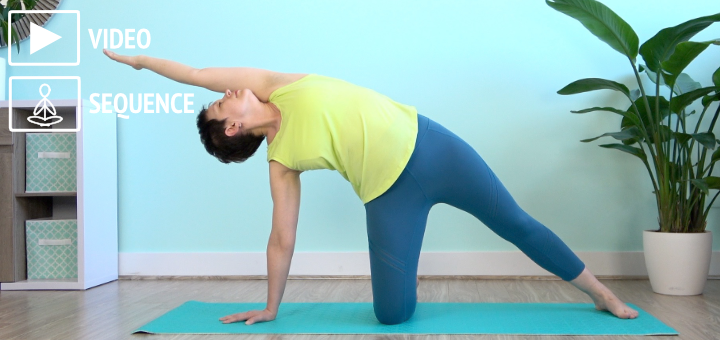Who are your yoga students and what problems do they face?

How’s your transition to teaching yoga online going? Do you have enough students to keep you busy, or do you need to find more? Are you able to connect with potential students and show them the value of your services?
A couple of weeks ago, we started a conversation about making yourself a part of your student’s story. This is the most effective way to present your services and get your potential students interested. The story usually unfolds like this: A CHARACTER (your potential student) who wants something encounters a PROBLEM. At the peak of their despair, a GUIDE (you) steps in, gives them a PLAN, and CALLS THEM TO ACTION. That action helps them avoid FAILURE and ends in SUCCESS.

Let’s examine the most important elements of that story and consider how they relate to your outreach efforts.
Today, we will talk about the hero of the story, the main CHARACTER. The most common mistake yoga teachers make is positioning themselves as the hero of the story instead of their student. Take a look at your website critically – does it talk more about you or your potential student? Is it more of “I do this and that and that,” or is it more “YOU get this if you engage my services”? Your potential students are checking out your website (and scan through newsletters and other communication methods) with one question in mind: “Can this help me get what I want?”
If you work with yoga students one-on-one, you already know how important it is to identify your student’s needs. The first question we always ask our new yoga student is, “What do you hope to get out of this?” Helping our students articulate their desires and goals is invaluable for us as teachers because it helps us define the direction of our work together, and it is essential for our students because it helps to narrow their focus. It also demonstrates to them that private yoga sessions are truly about their unique needs.
You can apply the same strategy to immediately capture the attention of a site visitor. By identifying a problem that they are dealing with and want to find a resolution to, you arouse their curiosity. Once they feel curious about your solutions to their problems, they are much more likely to give your services a try. Let’s use a specific example to see how it works.
This week, I found myself as a customer looking for a specific service. My family had recently adopted a puppy who came with an unfortunate habit of play-biting. There are many other skills that he doesn’t yet possess, but none of them matter to me right now because biting is my primary concern – it hurts! When I went online to look for solutions and puppy trainers, I was looking for “how to stop a puppy from biting.” There are tons of websites and local businesses that advertise dog training, but I was scanning their websites with a specific filter in my mind – right now, I am only interested in one issue. It is the businesses that prominently demonstrate how they deal with this particular issue that I chose to engage with.
It works the same with yoga. Generally speaking, most people come to yoga because they want to feel better. But what this means exactly will be different from one student to another, and they all have different obstacles that get in their way. Stating on your website that you help students feel better doesn’t identify their specific desires and won’t arouse their curiosity. It’s simply too vague. To make them pay attention, you need to reflect on specific urgent desires that your potential students have. They might have an urgent need to reduce back pain, improve digestion, be able to walk long distances without discomfort, feel more energized, keep their cool amidst adversity, be able to sleep through the night, deal with compulsive overeating, and so on. The best way to find out what they are looking for is to talk to your current and former clients, to your friends and family, and hang out in chats and on social media. Once you figure out what your potential students want, you can then try to match it with what you are qualified and interested in giving. When you find that match, prominently feature it in all your communications and try to become a go-to person for this particular issue. You can always expand your offerings from there.
As yoga teachers, we also know that we usually deal with different layers of human experience. On the surface, the problem might appear obvious, but what we are actually dealing with is how it makes us feel. When we encounter any kind of obstacle, we usually feel frustrated, incompetent, or confused. And it is often linked to some deeper issue that explains why we feel so frustrated.
Let’s analyze my puppy saga again. The main problem that I want to resolve is puppy biting. The underlying frustration I am experiencing (beyond physical pain from the bites) is that I do not feel in control and competent enough to train a puppy. I feel frustrated because I want to bond with my puppy but cannot.
Or, here is what it might look like for a mom who is home right now with two kids out of school, a restless husband, and an ailing mother. She wants to do yoga to stay calm while running a household that is potentially ripe with conflict. Her underlying frustration might be that she has to meet everybody else’s needs but her own. On the deeper level, she feels that she deserves self-care but is not getting it.

Or, here is what it might look like for a senior with preexisting health conditions who lives alone. She cannot go out safely and is now deprived of her usual social outlets. She decides to do yoga because her neck feels really tight, but underneath, she is looking for human contact, calm reassurance, and relief from chronic sympathetic activation. On a deeper level, she is constantly dealing with existential fears and needs to find ways to keep them at bay.
If you are able to identify those underlying frustrations that your potential clients experience and offer solutions to them, your clients will respond much more readily and will enthusiastically engage your services. The trick here is to narrow your focus. You cannot be everything to everybody. Pick a specific type of client that you want to serve. Do an extensive exploration of what they are dealing with on the surface and the frustrations that they experience under the surface. Then, frame your message in a way that offers solutions to their frustrations.

To be able to communicate our message of yoga effectively and authentically, we need to be clear to ourselves about who we are as teachers, what is our unique approach to yoga, and what we are ultimately working toward.







